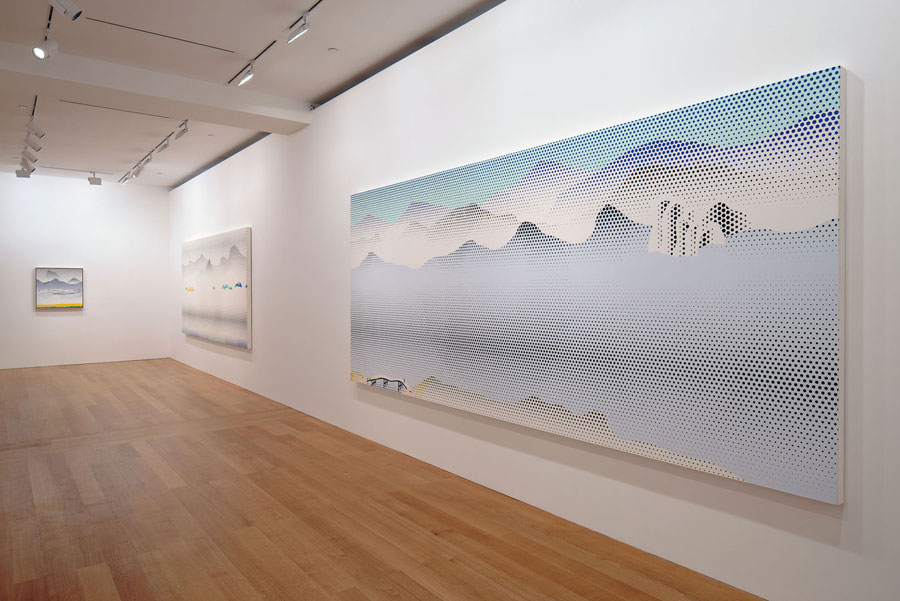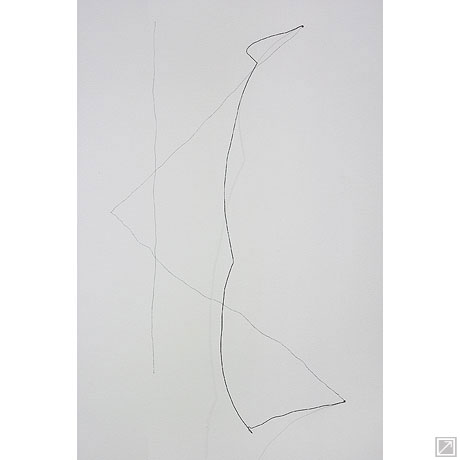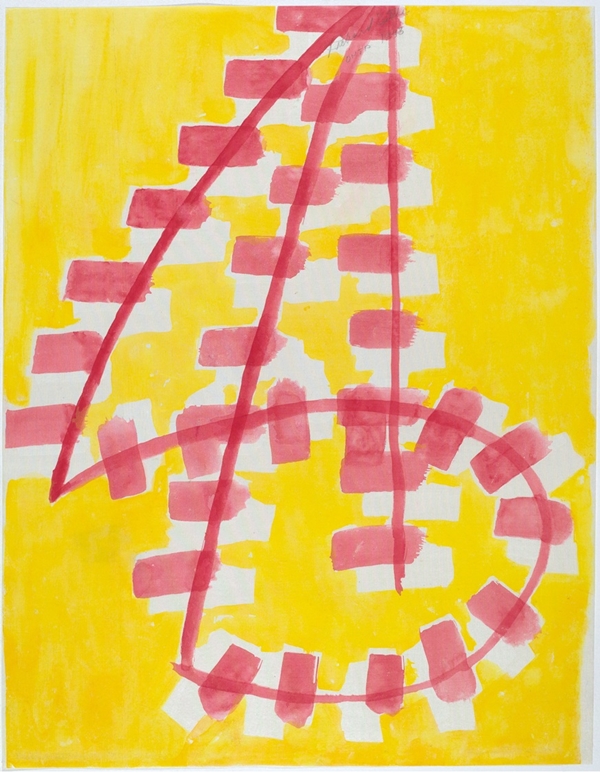Richard Tuttle is to kale as Richard Serra is to beef wellington. Richard Tuttle is to whisper as Jeff Koons is to scream. Known for his understatement in drawing and sculpture next month Richard Tuttle’s prints will collectively be shown for the first time in an exhibit at Bowdoin College in Brunswick, Maine.
Richard Tuttle’s work looks effortless on the surface and can send a viewer to lofty heights of inquiry and reflection on the self, or into a rage of fury depending on the angle it is seen. I’ve always been a fan of his work, always jealous of the intimacy, the slow thinking and the precision mixed in a ball of chaos. His work does drive some people mad however – the single piece pictured above of a laundry cord nailed to a wall had the curator fired at the Whitney when they chose to exhibit it in Tuttle’s 1975 retrospective.
To save the reader the time and agony of parsing out Tuttle’s space in the “post-minimalist” art movement, let’s just say he started out as a gallery assistant for Betty Parsons in the early 60s when the abstract expressionists were flooding the psyche of artists and viewers alike. Unlike the abstract expressionists who took a giant, baroque approach to feeling, expression and expansion, Tuttle took the opposite approach and explored the visual and the invisible with a furtive voice. A voice that needs attention these days as so many of us try to clamor to be heard – can we be heard and silent? Powerful and still? Yes, as Tuttle has shown with his work over the years.
This particular print exhibit at Bowdoin is interesting because it is only his prints, and it spans his entire career – an intimate retrospective if you will. As a lover of books, printmaking is a natural extension for Tuttle. Reflecting on his work as it spans from the 70s to now is a worthy exercise. If you take the small cord on the wall as an early example, then look to the suite of prints made just recently with his baroque approach to techniques, you realize the limits in his work have shifted over the years from material to process, and instead of the immaterial being complex, the materials become complex.
This reflects a trend in artists’ evolution that I’ve noticed where male artists begin their careers boldly (e.g. rope on a wall and command it is art, or Lichtenstein’s copying comics and offering them as art), then evolve into more subtle works (e.g. using over 8 different types of printing processes to get a certain effect in Tuttle’s case, or in Lichtenstein’s case to start exploring the subtle art of Asian landscape paintings in your work). For women artists the opposite seems true: they tend to start subtle and finish bold.
If you are in Maine check out these subtle Tuttle work, and marvel at the patience and the vision required to make it. A reminder too that the artist has always intended to work on an intimate scale, meaning his work speaks to a single person quietly versus the entire room. If you consider the work slowly, you may walk away loving a piece that will whisper to you for a while.
PS. While there take in the surrounding campus and town in Maine as slowly as the Tuttle exhibit – it’s as beautiful and telling as the work.
Tagged: Betty Parsons, Bowdoin College, Jeff Koons, Printmaking, Richard Serra, Richard Tuttle, Rope Piece, Roy Lichtenstein





0 Comments
Would you like to share your thoughts?